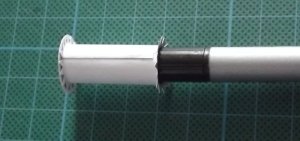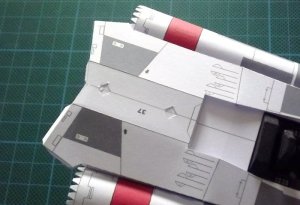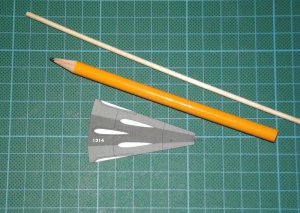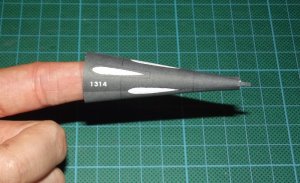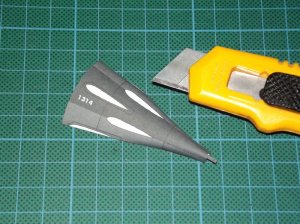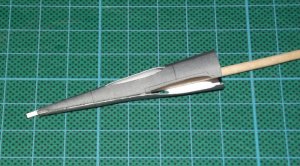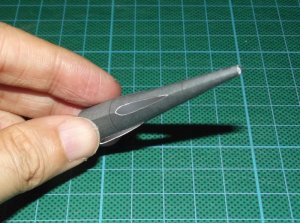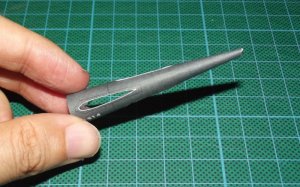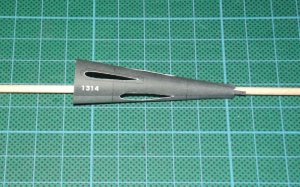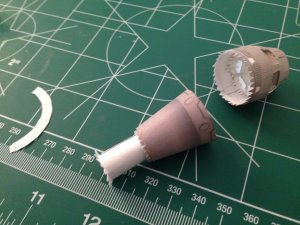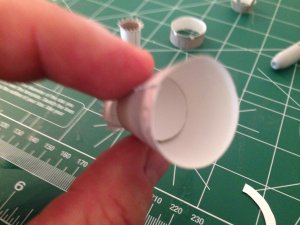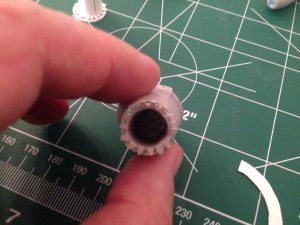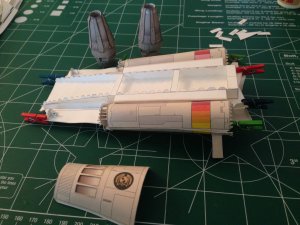My all-time favorite small spaceship design is the Buck Rogers Thunderfighter (Starfighter) designed by Ralph McQuarrie for the show Buck Rogers in the 25th Century starring Erin Grey. And Erin Grey. There might have been other actors in the show, too, but I can't remember them. Erin Grey. Ahhhhh.
Well, other than Erin Grey, the most worthwhile thing in the show was the Thunderfighter design. Gorgeous, unconventional, sleek and slender, with a definite hint of danger amid the glamour, it was much like Erin Grey. Ahem. And was memorable.
When I started back into building models, I wondered if I could find an affordable plastic model of the Thunderfighter. Monogram released a kit back in the 70's, and I found that those were running upwards of $75 on eBay, outside of this honest young pastor's price range. I looked at resin kits, and again, I was looking at close to $100 if I wanted the cockpit as well. That's when internet searching led me to Martin Saenger's paper model kit. A trip to Staples for some card stock and glue, and I was off to the races.
The build encompasses three pages of instructions. These are my pictures leading up to where I am right now, having finished page 1. The little vents halfway down the missile-shaped booms that form either side of the ship are bastiches, but it has been a real feeling of accomplishment getting this far. The model is elegantly designed, and the instructions give ALMOST enough information for me to figure out what to do. But at the top of page 2, I have some questions.
I am trying to figure out what part 92 does. Is it just a strip to join the ends of part 91 together? If so, why is it colored? There' say line down the middle of 92. Is that a score and fold line?
Also, the two diamond-shaped holes in part 37, what are they for? Should part 37 be glued down on the aft half?
Any input on these questions from folks who've built this ship before would be welcomed.
CrimsonLine
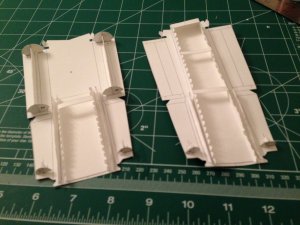
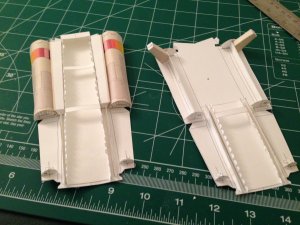
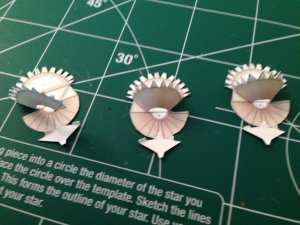
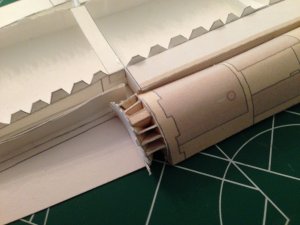
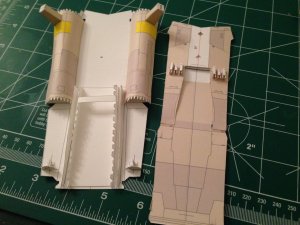
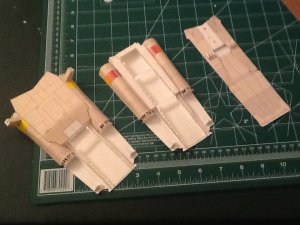
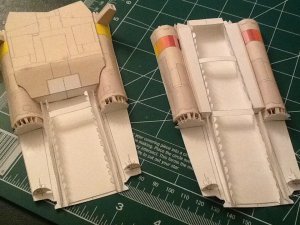
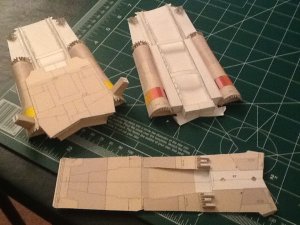
Well, other than Erin Grey, the most worthwhile thing in the show was the Thunderfighter design. Gorgeous, unconventional, sleek and slender, with a definite hint of danger amid the glamour, it was much like Erin Grey. Ahem. And was memorable.
When I started back into building models, I wondered if I could find an affordable plastic model of the Thunderfighter. Monogram released a kit back in the 70's, and I found that those were running upwards of $75 on eBay, outside of this honest young pastor's price range. I looked at resin kits, and again, I was looking at close to $100 if I wanted the cockpit as well. That's when internet searching led me to Martin Saenger's paper model kit. A trip to Staples for some card stock and glue, and I was off to the races.
The build encompasses three pages of instructions. These are my pictures leading up to where I am right now, having finished page 1. The little vents halfway down the missile-shaped booms that form either side of the ship are bastiches, but it has been a real feeling of accomplishment getting this far. The model is elegantly designed, and the instructions give ALMOST enough information for me to figure out what to do. But at the top of page 2, I have some questions.
I am trying to figure out what part 92 does. Is it just a strip to join the ends of part 91 together? If so, why is it colored? There' say line down the middle of 92. Is that a score and fold line?
Also, the two diamond-shaped holes in part 37, what are they for? Should part 37 be glued down on the aft half?
Any input on these questions from folks who've built this ship before would be welcomed.
CrimsonLine










